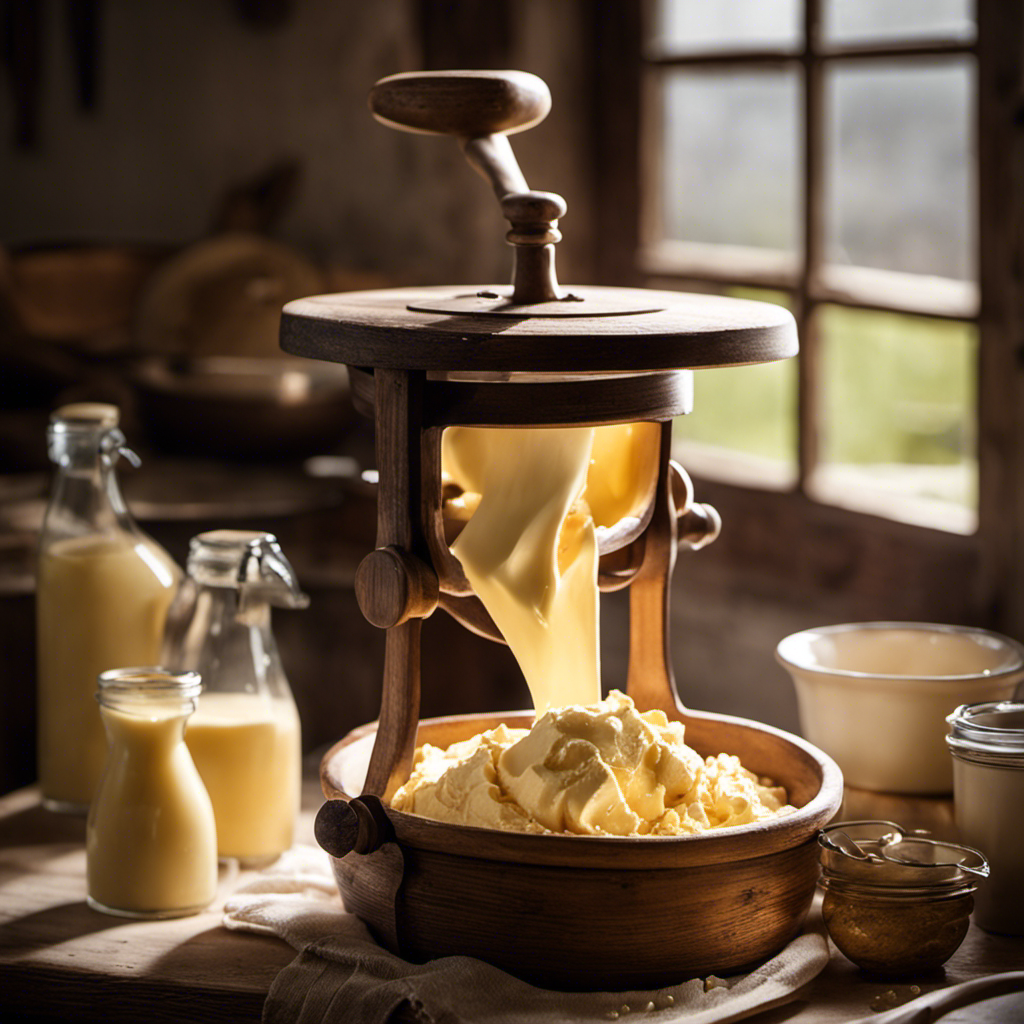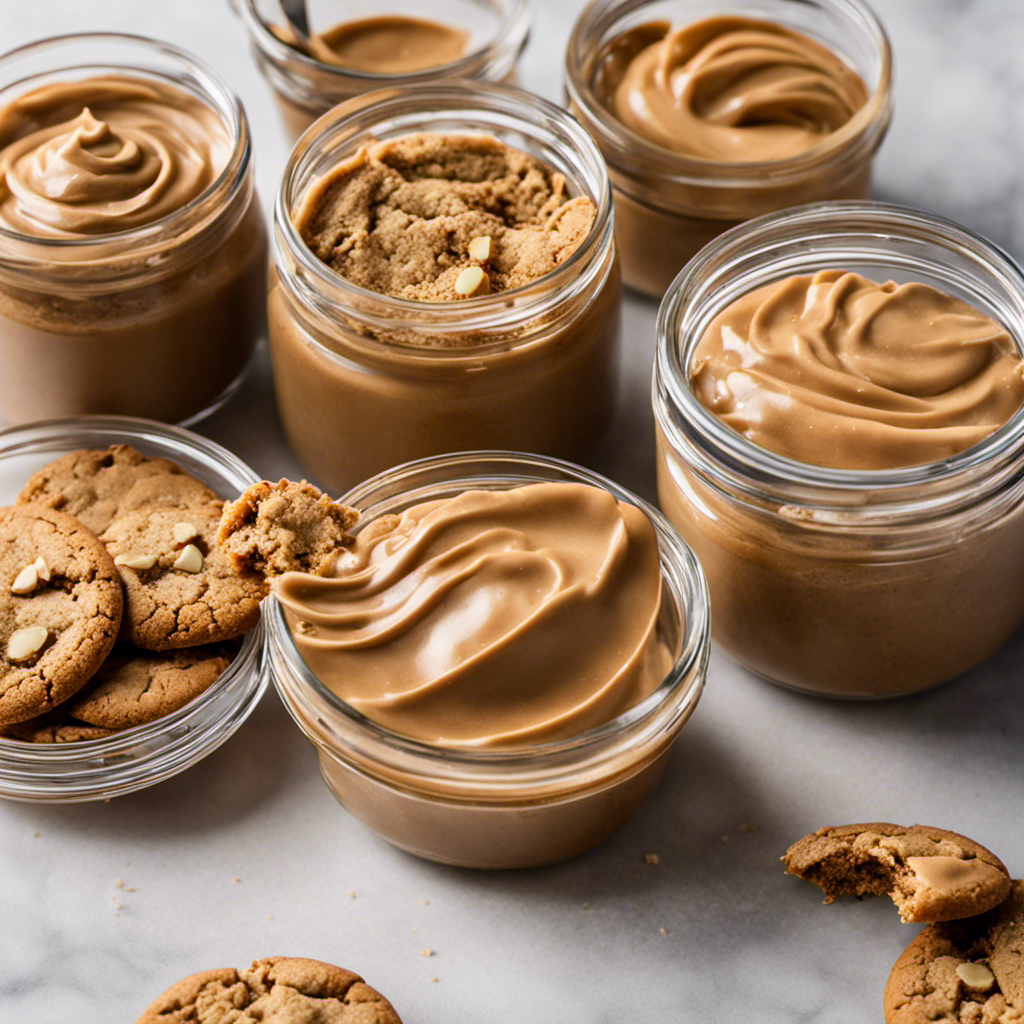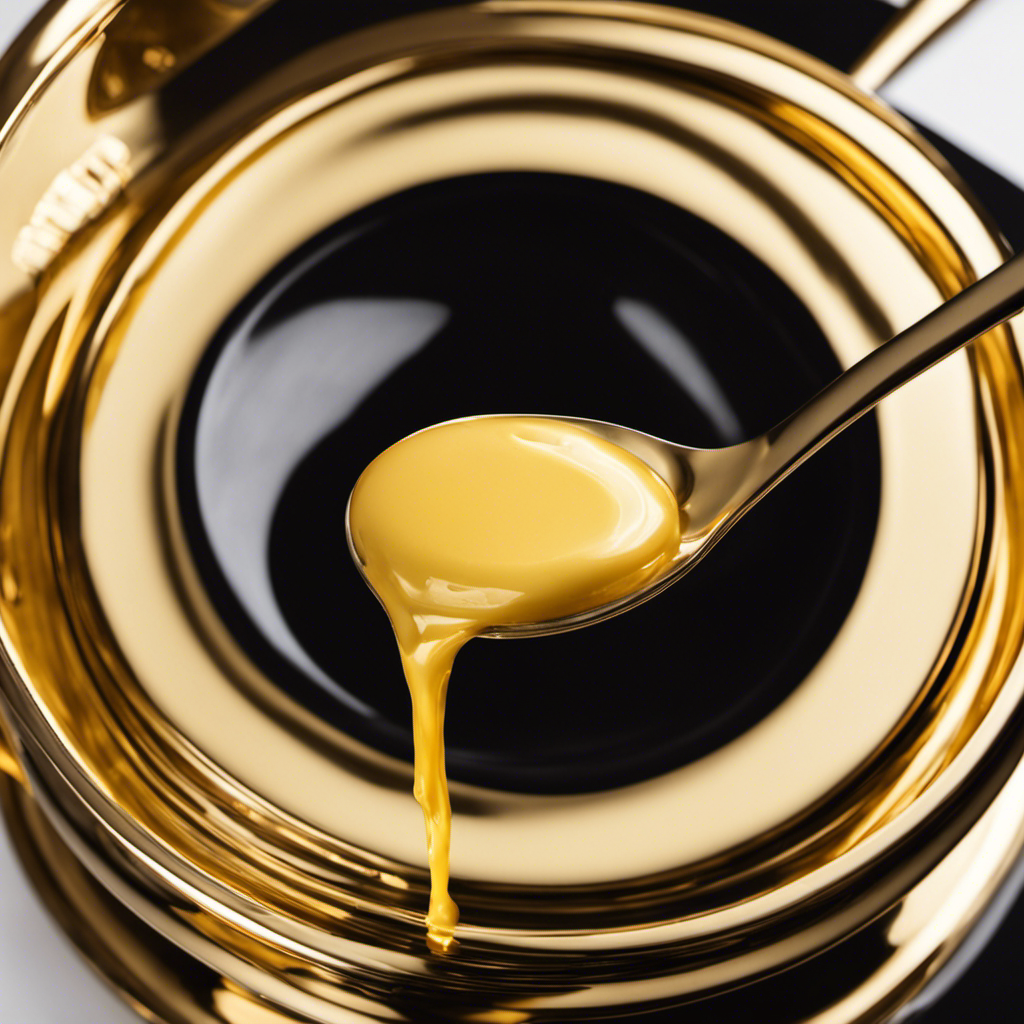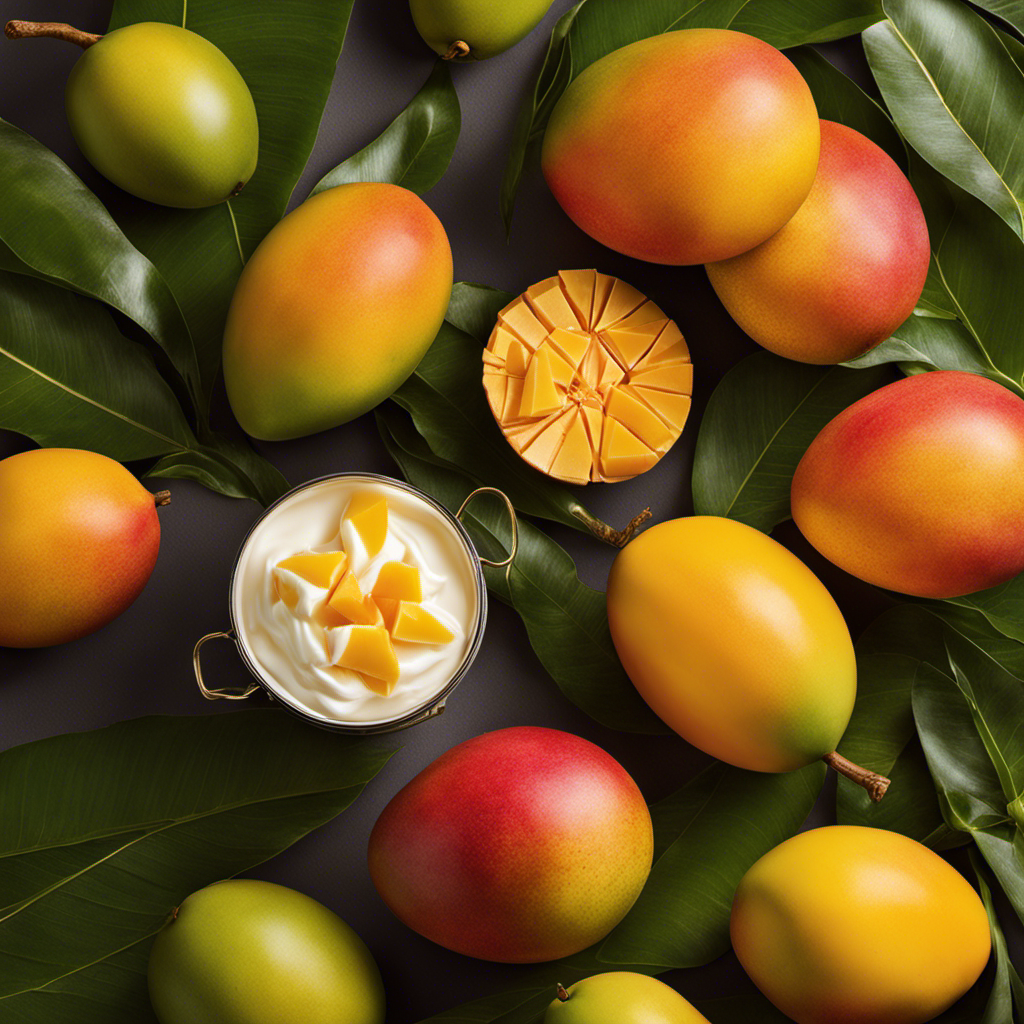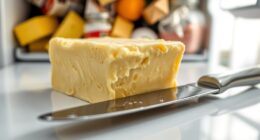Do you believe that making whipped butter is a challenging endeavor? Allow me to assure you, it is actually simpler than you imagine! By following a few straightforward steps, you can turn regular butter into a delicate and airy spread that will elevate your dishes to a higher standard.
In this article, I’ll walk you through the process of making whipped butter, from gathering the ingredients to adjusting the consistency. Get ready to elevate your culinary creations with this delicious and versatile ingredient.
Let’s get started!
Key Takeaways
- Soften unsalted butter at room temperature before whipping it
- Add flavorings such as honey, cinnamon, or vanilla extract to enhance the taste of the whipped butter
- Whip the butter vigorously until it becomes light and fluffy
- Store the whipped butter in an airtight container in the refrigerator or freeze it for longer storage.
Gathering the Ingredients
Now that you’ve gathered all of the ingredients, it’s time to start making your whipped butter.
Making flavored butter at home is not only easy but also allows you to customize it to your taste.
To start, you’ll need unsalted butter, softened at room temperature. This will make it easier to whip.
You can also add various flavors to your butter, such as herbs, spices, or even honey for a touch of sweetness. Simply mix in your desired flavorings with the softened butter until well combined.
Once your flavored butter is ready, it’s time to whip it. Using an electric mixer or a whisk, beat the butter until it becomes light and fluffy. This will take about 3-4 minutes.
And just like that, you have homemade whipped butter, ready to be spread on your favorite bread or used in your favorite recipes.
Softening the Butter
To soften the butter, let it sit at room temperature for about 30 minutes. This allows the butter to become easier to work with and helps achieve a fluffy texture.
When butter is too firm, it can be difficult to incorporate into recipes or spread onto bread. Room temperature butter, on the other hand, is softer and more pliable, making it easier to whip into a light and airy consistency.
The key is to allow the butter to warm up gradually, so it becomes soft but not melted. This process is essential for achieving the perfect whipped butter that can be used as a delicious spread or as a base for frosting and other desserts.
Adding Flavorings
When it comes to butter, there are countless options to enhance its flavor. From herbs and spices to sweet additions, the possibilities are endless.
In this discussion, we will explore the best flavoring options that can take your butter to a whole new level and make it utterly delicious. Whether you’re looking to make a savory compound butter or a sweet spread, we’ve got you covered with tips and ideas to enhance the taste of your butter.
Best Flavoring Options
For the best flavoring options, you can try adding honey, cinnamon, or vanilla extract to your whipped butter. These ingredients not only enhance the taste but also add a delightful aroma to your homemade spread.
When it comes to flavor pairing, honey provides a natural sweetness that complements the creamy texture of butter. It adds a subtle floral note that elevates any dish, from warm toast to fluffy pancakes.
Cinnamon, on the other hand, brings a warm and comforting flavor to the table. Its earthy and slightly spicy taste pairs perfectly with the richness of whipped butter.
Lastly, vanilla extract lends a sweet and fragrant profile to your butter. Its smooth and creamy essence is a classic choice for those seeking a familiar yet delightful twist.
Enhancing Butter Taste
If you want to enhance the taste of your butter, try adding honey, cinnamon, or vanilla extract for a delightful twist. These creative flavoring ideas can take your ordinary butter to a whole new level of deliciousness. The sweetness of honey complements the creamy richness of butter, creating a luxurious spread for your toast or pancakes. Cinnamon adds a warm and comforting flavor, perfect for spreading on freshly baked goods. And the addition of vanilla extract brings a subtle sweetness and depth to your butter, making it a versatile ingredient for both sweet and savory dishes.
To give you a better idea of how these flavor combinations can enhance your butter, here is a table showcasing different ways to incorporate honey, cinnamon, and vanilla extract into your butter:
| Flavor Combination | Ingredients |
|---|---|
| Honey Butter | Butter + Honey |
| Cinnamon Honey Butter | Butter + Honey + Cinnamon |
| Vanilla Honey Butter | Butter + Honey + Vanilla Extract |
| Cinnamon Vanilla Butter | Butter + Cinnamon + Vanilla Extract |
With these simple additions, you can elevate the taste of your butter and bring a touch of creativity to your meals.
Whipping the Butter
Let’s talk about whipping butter, because let’s be honest, who doesn’t love a good whipped butter?
In this discussion, we’ll delve into the key points of whipping butter: how to whip it real good, and whether you prefer it fluffy or chunky.
I’ll share some tips and techniques to achieve that perfect whipped consistency that will have your taste buds dancing with joy.
Whip It Real Good
To achieve the perfect whipped butter consistency, you’ll need to beat it vigorously until it becomes light and fluffy.
Whipped butter is a versatile and delicious addition to any meal. Not only does it spread easily on bread and toast, but it can also be used in various recipes, adding a creamy and rich flavor.
One of the benefits of whipped butter is that it is easier to spread than regular butter straight from the fridge. It also has a lighter texture, which makes it perfect for baking and cooking.
Additionally, whipped butter can be infused with various flavors, such as garlic, herbs, or honey, adding an extra layer of taste to your dishes.
Fluffy or Chunky?
When deciding between fluffy or chunky, consider the texture you want to achieve in your butter. Fluffy butter is light and airy, perfect for spreading on toast or pancakes. It is achieved by whipping softened butter until it becomes creamy and voluminous.
On the other hand, chunky butter contains small pieces of solid butter, which can add a delightful texture to baked goods or mashed potatoes. The main advantage of fluffy butter is its spreadability and ease of incorporation into recipes. However, chunky butter provides a more distinct buttery taste and can add a pleasant crunch.
Ultimately, the choice between fluffy and chunky butter depends on personal preference and the specific application. So, next time you’re making butter, consider the pros and cons of each texture to create the perfect butter for your needs.
Adjusting the Consistency
There are various methods you can use to adjust the consistency of whipped butter. Whether you prefer a lighter, fluffier texture or a thicker, creamier one, these troubleshooting tips will help you achieve the perfect consistency every time.
| Method | Consistency |
|---|---|
| Room Temperature | Soft and spreadable |
| Chilled Butter | Firm and creamy |
| Whisking Technique | Light and airy |
To adjust the consistency of whipped butter, start by taking it out of the refrigerator and letting it come to room temperature. This will soften the butter, making it easier to whip. If you prefer a firmer texture, use chilled butter and whip it slowly until it reaches the desired consistency. For a light and airy texture, use a whisking technique where you rapidly whisk the butter until it becomes fluffy. Experiment with these methods to find the consistency that suits your taste.
Storing Whipped Butter
After adjusting the consistency of my whipped butter to perfection, the next step is to store it properly to extend its shelf life. Storing whipped butter is easy and convenient, as it can be kept in the refrigerator just like regular butter.
Here are three important tips to keep in mind:
-
Use an airtight container: Transfer the whipped butter into a clean, airtight container to protect it from absorbing any odors or flavors from other foods in the fridge.
-
Label and date: To keep track of the freshness of your whipped butter, don’t forget to label the container with the date it was made. This will help you determine when it’s time to use it or make a fresh batch.
-
Keep it chilled: Whipped butter should always be stored in the refrigerator to maintain its texture and prevent it from melting.
Now that we have our whipped butter stored safely, let’s move on to the exciting part: using it in delicious recipes.
Using Whipped Butter in Recipes
To add a creamy and rich flavor to your favorite recipes, try incorporating whipped butter as a substitute for regular butter. Whipped butter is light and fluffy, making it easier to incorporate into your baking. It adds a delicate texture and a subtle hint of sweetness to your cakes, cookies, and pastries.
When using whipped butter in baking, you can also reduce the amount of sugar in your recipes, as the butter already provides some sweetness. Additionally, whipped butter can be a great addition to savory dishes. It can be used to sauté vegetables, spread on warm bread, or melted over grilled meats. The possibilities are endless!
Tips for Successful Whipped Butter
When incorporating whipped butter into your recipes, remember to keep it at room temperature for easier blending. Whipped butter is a versatile ingredient that adds richness and flavor to a variety of dishes. Here are some tips for successful whipped butter:
-
Use the best tools: A stand mixer or hand mixer is the best tool for whipping butter. It allows you to achieve a light and fluffy texture in less time. Make sure to use the whisk attachment for optimal results.
-
Troubleshooting tips: If your whipped butter is too soft, place it in the refrigerator for a few minutes to firm up. On the other hand, if it is too hard, let it sit at room temperature for a few minutes before using.
-
Experiment with flavors: Whipped butter is a blank canvas that can be customized to your liking. Add herbs, spices, or even a hint of sweetness like honey or maple syrup to elevate the taste. Get creative and have fun with your whipped butter creations!
Variations of Whipped Butter
For a unique twist on your spreads, try experimenting with different flavors and ingredients to create variations of whipped butter. Whipped butter is incredibly versatile and can be used in a variety of creative ways. Here are some ideas to get you started:
| Flavor | Ingredients | Creative Uses |
|---|---|---|
| Garlic-Parmesan | Roasted garlic, grated Parmesan cheese | Spread on warm bread or use as a topping for grilled vegetables. |
| Honey-Cinnamon | Honey, ground cinnamon | Perfect for spreading on toast or pancakes. |
| Herb-Infused | Fresh herbs (such as rosemary, thyme, or basil) | Use as a flavorful base for sauces or to melt over a juicy steak. |
| Spicy Chipotle | Chipotle peppers in adobo sauce, lime juice | Add a kick to your tacos or use as a dip for chicken wings. |
Get creative with your whipped butter and explore new flavors and combinations. The possibilities are endless, and you’ll never look at butter the same way again!
Frequently Asked Questions
Can I Use Salted Butter Instead of Unsalted Butter for Making Whipped Butter?
Yes, you can use salted butter instead of unsalted butter for making whipped butter. However, keep in mind that salted butter already has salt added, so adjust the amount of additional salt accordingly. Whipped butter is a delicious spread alternative.
Can I Add Herbs and Spices to the Whipped Butter to Enhance the Flavor?
Adding herbs and spices to whipped butter is a great way to enhance the flavor. You can try different combinations like garlic and rosemary, or even chili and lime. It adds a delicious twist to your butter!
How Long Can Whipped Butter Be Stored in the Refrigerator?
Whipped butter can be stored in the refrigerator for up to two weeks. However, its shelf life can vary depending on factors like temperature and air exposure. Proper storage is key to preserving its quality.
Can Whipped Butter Be Used as a Substitute for Regular Butter in Baking Recipes?
Using whipped butter as a substitute in baking recipes has its benefits. It adds lightness and a fluffy texture to baked goods. Making whipped butter at home without a mixer is easy by using a fork to vigorously beat softened butter.
Can I Use a Hand Mixer Instead of a Stand Mixer to Whip the Butter?
Yes, you can use a hand mixer instead of a stand mixer to whip butter. The pros are that it’s more affordable and easier to clean. The cons are that it may take longer and require more effort.
Conclusion
I can’t even begin to describe the utter joy that comes from making whipped butter. It’s like taking a plain old stick of butter and turning it into a fluffy cloud of deliciousness.
The process is simple, but the end result is pure magic. With just a few ingredients and a bit of elbow grease, you can create a spread that will elevate any dish to new heights.
So go ahead, indulge in the extravagance of whipped butter and experience a taste sensation that will leave you speechless.
